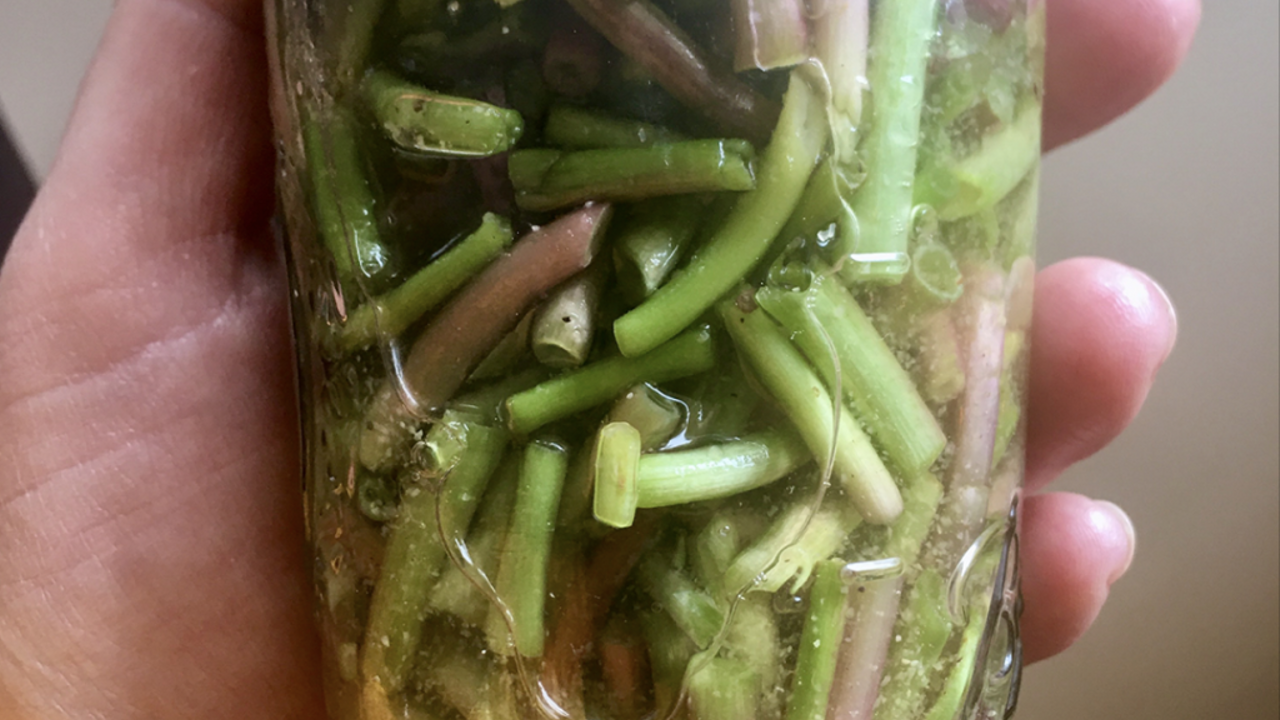Lacto Fermented Dandelion Stem Pickles
Jan 18, 2021
Not only is every part of a dandelion medicinal, they offer an alluring range of pleasant textures to add to your culinary repertoire. The stems have a nice crunch that I enjoy turning into lacto-pickles & serving alongside anything that would benefit from a probiotic, salty, tart, gently bitter bite.

- Enough brine (salt water) to completely cover the dandelion stems. The ratio of salt to water is in this case: 1 tsp. of salt dissolved in one cup of filtered or spring water* (which makes it around a 2% salt brine.)
Note: Concentration of salt to water varies slightly depending on what you’re fermenting & sometimes other variables like time of year / ambient air temperature. As a general rule the more salt there is in the brine the longer the fermentation process. Another general rule is the colder the fermenting environment is the slower fermentation happens. What this might mean practically is that if it's very hot outside you might choose to use slightly more salt in your brine than you would if it were cool out. For the sake of this recipe these are variables that you needn't worry too much about. If you find it an intriguing topic however, there are nifty brine calculators available online that will automatically make conversions & give more info as to why you might choose them as well as a whole world of books on fermentation, a wonderful starting being Sandor Katz’s The Art of Fermentation.
*Filtered or spring water is important because tap water generally contains chlorine which will kill the precious microbes needed to ferment your foods. - ½ tsp dried of herbs/spices per cup of fermented stems (Optional)
For this recipe I used dried garlic & black pepper. Now is a wonderful opportunity to choose what you most enjoy / will use most / have available in your spice rack. There are no wrong answers & you’re pretty much assured of it tasting good.
Directions
Pour brine over the dandelion stems till they are completely covered.
Place your jar on a saucer or plate to catch any brine that leaks out when fermentation gets going & leave to do its thing in a spot on your counter or in a cupboard out of direct sunlight.
Allow to ferment for 4-6 days checking daily that the plant matter is below the brine & if necessary add a little filtered water to cover if it leaks out.
Lacto fermentation happens in an anaerobic environment, which means out of contact with oxygen & keeping the plant matter under the brine achieves this requirement. There are tools such as specially made weights for keeping your fermenting matter below the brine & lids designed to attach to mason jars that create an ‘airlock’, also ensuring an anaerobic environment, that can be purchased online that I do sometimes use myself. However I generally defer to using whatever hacks I can devise to utilize what I already have & not buy more stuff until it's absolutely necessary. It's really up to you which you prefer & in this case pushing the plant matter down once or twice a day works just fine.
After the first 4 days begin to taste your fermenting stems daily. The longer they ferment the softer & sourer they become. When they taste good to you, they're ready. Stored in the fridge where they will last about a month.
Have you checked out our Spring Detox eBook & Microcourse?
If you're ready for a fresh start – a true inside out restart – then yes, this micro-course is absolutely for you!
